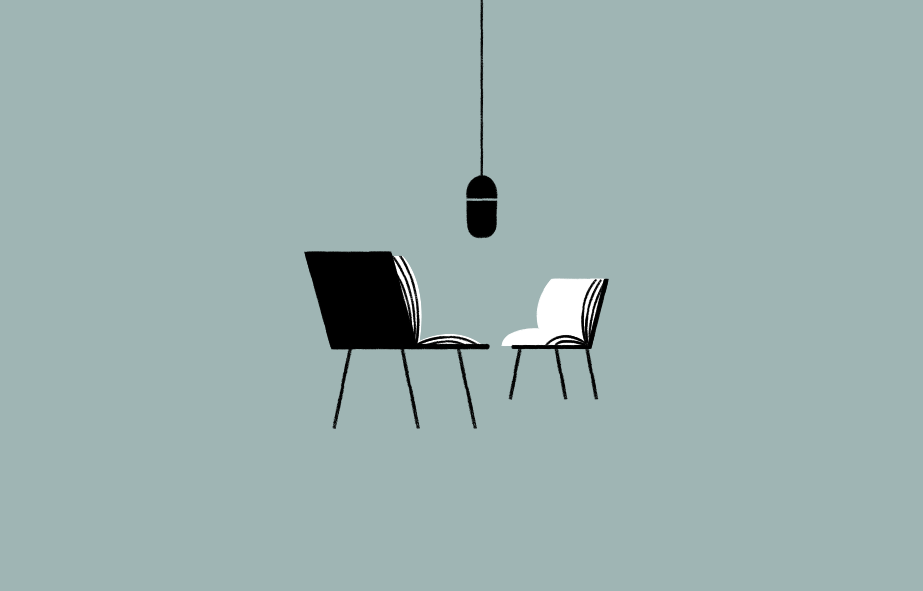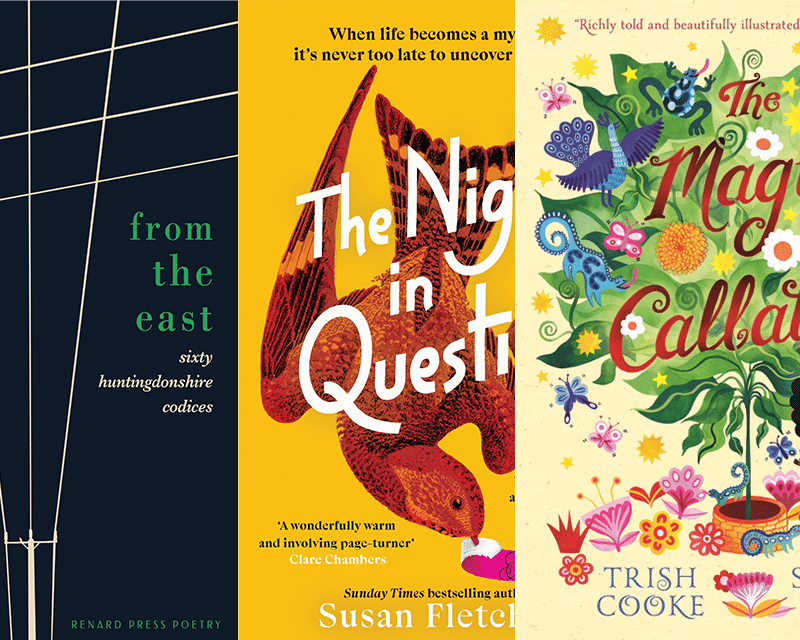- Collected
- Article
Building New York
A hut of one’s own

- 18 December, 2017
- Fraser Grace
The moment came when the need for a room of my own, (to almost quote Virginia Woolf) mutated into a darker, more troubling obsession: the urge to build a room of my own, to make a place from scratch. If necessary, I would gouge it from the earth with my bare and bloodied hands.
George Bernard Shaw was to blame. His small writing hut revolved, so that sunlight could be followed or avoided, by the simple expedient of pushing the entire shed around to face the other way. I thought this was brilliant.
To give you some idea of how locked-on I can get with an idea, I scraped up funds and paid a man called Mark to grub out the diseased fruit trees at the bottom of our straggle-arsed garden, to expose a view of the field beyond. I marked out a circular base, set a central pivot in concrete, and before the lime was dry on my eyelashes, had sourced a dozen heavy-duty castors from Ebay. Only then did my wife Sue point out that in the old photo, it is not GBS himself pushing the contraption shadewards, but his loyal staff. Unlike much of George’s work, that was an observation freighted with subtext.
The other detail I love about the Shavian hut, is that he called it ‘London’. When people telephoned the great man, said staff could say in all honesty, ‘I’m sorry but Mr Shaw is on urgent business, in London.’
Urgent business. This was the other driver. As a playwright, I have a great deal of work to accomplish, and only one short life to do it.
I have a writing place in the house, a perfectly good writing place. It has a desk, a filing cabinet, a stretch of wall covered with handbills from my sometimes-theatrical life, and a window overlooking the neighbours’ conservatory. There is always something to see. It is, though, a compromised space. It doubles as a guest bedroom. It has an unsatisfactorily lumpy sofa bed that is frequently used to swallow guests; and there’s the rub. Once a visitor is trapped in that bed, I can’t access my desk. I am reduced to hovering outside the door, waiting for the golem to rise, or dress, or finish taking my books out of alphabetical order, or whatever else it finds to do in there.
There is also a second desk in the room, for those occasional days when Sue can work from home. This brings with it the joy of sloping off together for lunch in the Barmaid’s Arms. It also brings with it the hideous activities of the properly employed: the endless phone calls with Chris from Finance; numerous, execrable conference calls that make my work – the real, hard work of writing – impossible.
The idea of reclaiming the land at the bottom of the garden, of finally harvesting a unique view of the English countryside before petty bureaucrats capitulate and developers move in, was born. I would build myself a place to write. It would be a custom-made, non-revolving, room with a view. And I would call it New York.
I do have some form with building, not all of it cautionary. Some years ago, when things in the writing game were slow and my heels were thoroughly gnawed by the black dog, I built my kids a treehouse.
There wasn’t a tree of anything like the right size or shape – let alone health – on our vast estate, but I considered this no impediment. If I could build something just a few feet from the ground, it would feel to a small child like the real thing. Four sturdy posts, with three wrap-around bands of planks – one band at the top, one at ground level, and one somewhere around the middle – and the bare bones of a treehouse would be made flesh. The top band would support the rafters for a shallow-pitched roof, the middle band would be decked out with lateral beams to make a floor laid with plywood sheeting. The bottom band would stop the posts splaying out at the foot and so prevent the whole thing from toppling over, crushing the delicate children inside.
A scene from Peter Weir’s classic thriller Witness ensued. Friends and neighbours a.k.a. Amish farmers armed with hammers, came round for a barn-raising. Beer was supplied, posts were held broadly upright. Together we waggled the pre-drilled planks of the middle band into position, and fastened them loosely to the posts with reassuringly large bolts. Next, the bottom band was hammered into place with massive nails, and the bolts in the middle band were tightened up. Finally the top band, or strake, was fastened on, this time with whining coach screws. The whole thing, looking like an old-fashioned box-kite on its ear after a hard night out, was rigid.
Over the next few weeks, I cladded (clod? clad?) the walls and fitted in windows and a door as I found them in skips or at the dump or – failing everything – at an architectural salvage place down the road.
Amazingly, more than fifteen years later, the tree house is still up and, long after those delicate children have warped into adults, it still seems in pretty good shape.
How could a writing hut be any more difficult?
Once bitten, I passed long nights in the company of graph paper and pencils. I measured, and counted little boxes of blue ink on white, and measured again, and rubbed it out and started over. Finally I had what seemed an appealing and accomplishable plan.
My writing hut would be a modernist block, measuring 3.47 by 2.44 metres (I would use the project to convert myself, once and for all, from imperial feet and inches: this alone would make my children proud). The upstage wall of the hut – some old habits are impossible to break – would have windows and glazed double doors opening towards the field. The downstage wall would bear the back door and also a narrow slit window plundered from a skip outside the village chemist. The roof would be a single pitch in rolled steel set at a jaunty angle, with a translucent panel to ensure adequate daylight for reading and writing. Controversially, the roof would slope from stage right to stage left (rather than upstage to downstage), with two small windows at the top of the higher wall, admitting yet more light. Inside, there would be a wood-burning stove. And a dog. And myself, writing great works of staggering genius.
The breaking of the ground began on 18 July 2015, and Son 1 helped mix and lay the concrete base. I am precise about the date, because I took a photo of him, restraining the dog from treading on wet concrete. We are exhausted, and the base is only half-complete.
A couple of weeks for the base to dry out, and the phoney war was over. Following the system trialled with the treehouse, tall posts were wrapped with bands of wooden planks, with the floor resting on beams spanning the (much lower, but still raised) middle band. This raised floor increased our view of the field just a little, stopped the cold striking up from the base and allowed room for storage underneath.
As before, timber for the entire frame was reclaimed — along with all the windows and doors; either personally liberated from skips, or swapped for pennies at a community wood yard. Only the roof and the cladding was bought new, the last composed of feather-edged larch planks cut fresh at the local sawmill and hung on the frame horizontally, shiplap style.
The result is a mix of old and new, and is of course as compromised – or maybe synthesised – a space as any. The writing hut sometimes becomes a late-night drinking den for gangly young men; it is also a summerhouse, a fantastic place to read, a place to decompress after work, a solace. In the evening, oil lamps warm and light the space, the absence of a telly draws out conversation as neatly as whisky, a daybed folds out from the wall to facilitate musing, while a rechargeable record deck scratches the backs of assorted old vinyl.
And do I write there? I do. A screenplay based on my play about Kalashnikov, designer of the AK4, and a new stage play about resisting fascism, have both rolled off the folding desk in recent weeks of pleasurable toil. I am writing this article there now.
Away from the hut, stubs of pencil line my pockets, forever joining the crafts of builder and playwright. Worrying as it is to know your ‘happy place’ has become physical, a happy place is, for once, what the playwright has wrought.
Footnote: enquiries about how you can build your own writing hut are welcome, but be warned: I am often away on urgent business, in New York.
You might also like:
No facts, only versions
Memoirs are as much about what is excluded as what is included. This edition examines how you can evoke the…
RLF Fellows’ News: April 2024
Publishing News RLF Fellow Trish Cooke’s new children’s book, The Magic Callaloo, is set to be published by Walker Books…
Susan Fletcher on outsiders in fiction – literal and imagined
I’ve always known that I’ve preferred to be outside. To be an outsider – literally, and, specifically, amongst wild places…


